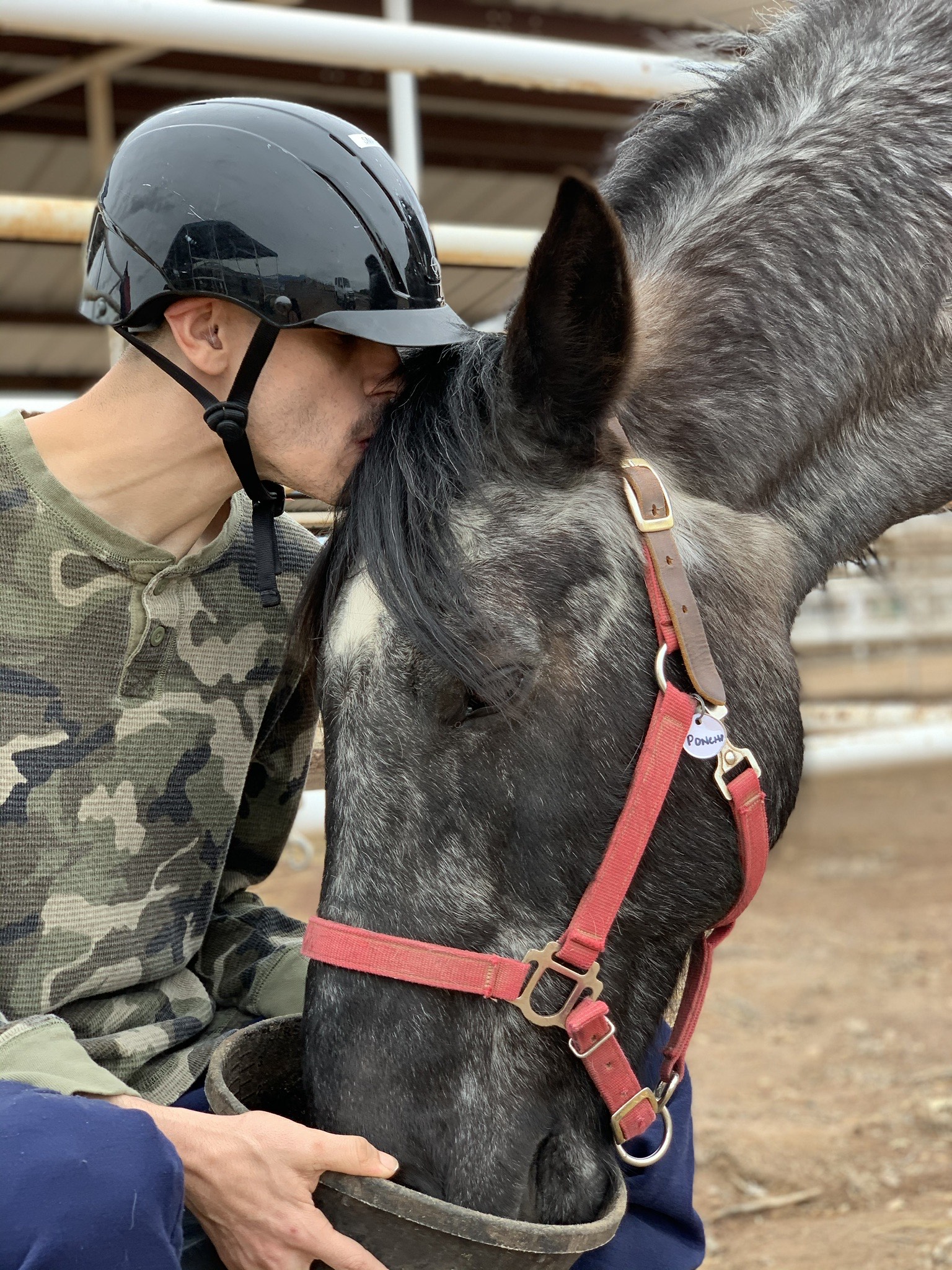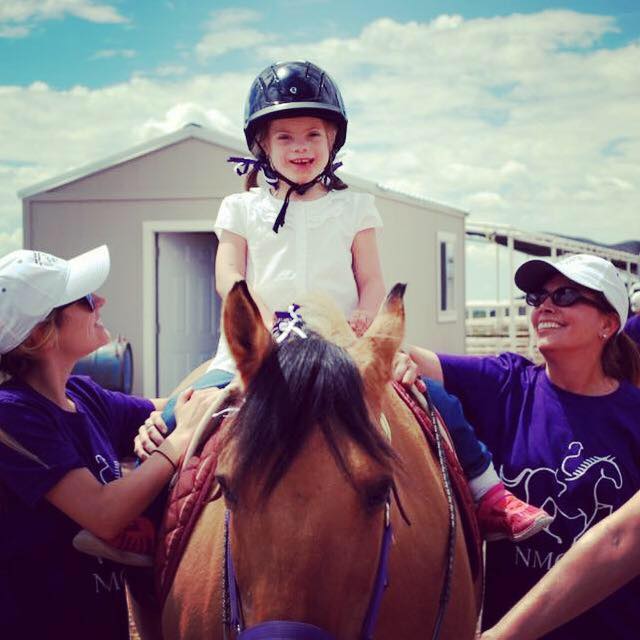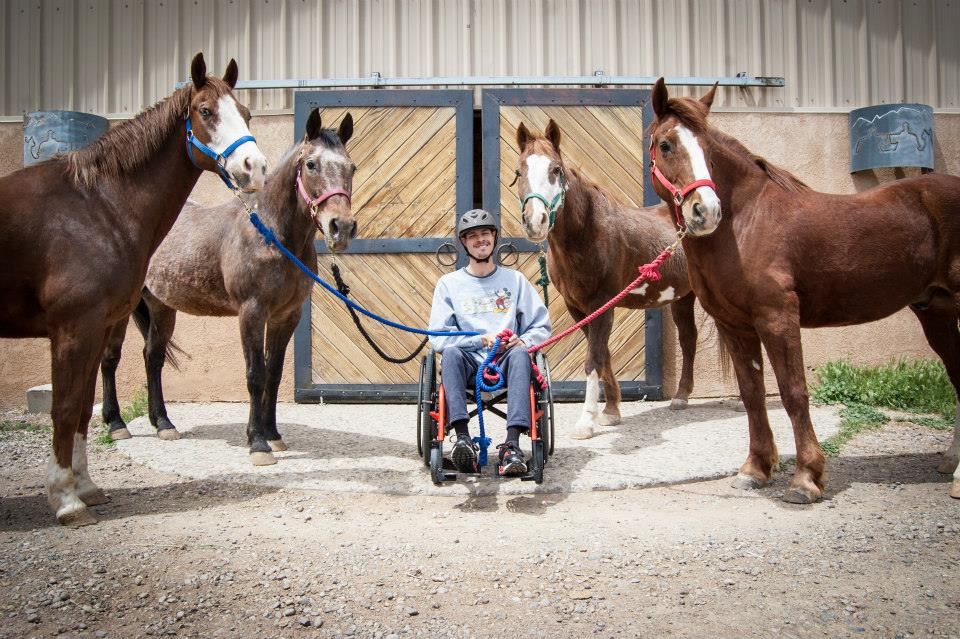The New Mexico Center for Therapeutic Riding Is Moving
A forever home to serve more individuals with disabilities in our community.
By Ashley Fischer
Since 2010, the New Mexico Center for Therapeutic Riding (NMCTR) has provided equine-assisted services to individuals with disabilities of all ages. NMCTR is a 501(c)(3) nonprofit organization and is a member of the Professional Association of Therapeutic Horsemanship (PATH Intl). Starting as a little nonprofit, NMCTR has grown over the years to now serve more than 100 individuals with special needs each year, with an increasing demand driving us to start a waiting list. We started with two horses and currently have eight that are the heart of our organization.
Why horses? Horses are amazing animals that have the intuition to read every emotion humans feel. They connect with a human in a way that no other animal can. Researchers from the HeartMath Institute have found that a human’s heart rhythm can be lowered into an emotionally regulated state when around horses. If you are having a sad or angry day, they will carry those emotions for you and bring you joy, teaching you healthy ways to cope. If you are having a joyful day, they will celebrate with you, promoting confidence. Not only do they naturally connect with us, but they can also assist with physical impairments. When riding a horse, the movement of a horse walking will stimulate the muscular and nervous system. Your core will strengthen, your balance will improve, and you will become much more limber. As you can see, horses have the amazing ability to change lives.

Thomas Maestas connecting with Poncho.
There are a lot of equine-assisted services offered throughout the country because it’s recognized that the benefits are remarkable. But how is NMCTR different from other programs? We value our individualized services for every person who walks through our doors. We have our riders establish personalized emotional/social, physical, and cognitive goals. We want our riders to gain confidence from their accomplishments. We also have adaptive equipment, such as a wheelchair ramp and lift, specialized saddles, different sensory equipment, schedule boards, and number systems. All our riding instructors are also PATH Intl. certified therapeutic riding instructors. Each instructor generates a weekly lesson plan. For example, let’s say we have a rider with autism. We design successful lessons by making sure to understand their sensory, social, and communication needs. We may use a number picture board for riders that are nonverbal, may use sensory reins to make it easier for the rider to hold, or choose a horse that walks with a pep in his step versus a horse that walks very slow. Some horses walk very exuberantly causing more sensory input. This can help riders that need additional input to engage. But sometimes too much input causes overload, and in this case we would choose a horse that walks very slowly and gingerly. We care about every rider and know the amazing things horses can do, so we try our hardest to set every rider up for success.
Over the years, I have seen some remarkable events. I saw a 29-year-old woman say her first word on a horse: “Kodi,” the name of her horse. I had a rider with MS start to feel parts of her body that she had not felt in years. I had a young man in a wheelchair ride a horse all by himself, no assistance. That was the only time in his life that he could be independent, as he needs help with everyday self-care. I had a young girl who struggled with depression and suicidal ideations learn healthy ways to cope with her traumas. Horses change people’s lives in different ways. What makes it easy for me to go to work every day is watching people’s lives transformed by their connection with their favorite horse.

Lisette enjoying her ride on her horse Maggie.
As a small nonprofit, we rely heavily on volunteers. We would not be able to have our program without them. They believe in our mission, and they too are moved by the amazing connection and benefits people have with horses. We have volunteers to assist in caring for the horses and we have volunteers who assist in the lessons and help the riders. When we ask the volunteers for their “why,” they either say it is because of their personal relationship with our horses or because they get to witness our horses changing the lives of people with disabilities.
Up until the last few months, we have operated out of HIPICO Santa Fe, an equestrian facility off Airport Road. We changed hundreds of lives at that location, but like any small business, we knew it was time for us to grow into our own space. We were lucky enough to find land to build a new equine-assisted services facility that will support the future growth of our programs and provide more space for the herd of horses. Our new home is about 20 minutes south of Eldorado. There are so many wonderful things to come with this move. First and foremost, our horses will now be able to live in a pasture environment with free access to grass. Horse lovers know this is huge. The horses will be able to go back to their roots of living in a herd, not be confined to a stall, and be able to roam around (which will benefit them physically), be able to release any tense or stress generated as a lesson horse, and have healthier digestive systems. We are also thrilled to have a “retirement pasture” so that when a horse is retired, they can live out their life with us. Furthermore, we chose to make this move to be able to add additional

Thomas Maestas with NMCTR’s horses.
horses to serve more riders, develop additional community supportive programs, and create new partnerships with the surrounding communities. To see this vision through, we have developed a New Home Campaign to raise $90,000 to build a new arena, three-sided structures for the horses to get out of the elements, and expenses for developing vacant land into a five-star equine-assisted services facility.
This move is one of the best things that has happened to NMCTR. We are thrilled to share this with you and would love for you to visit our new home.
Ashley Fischer is the NMCTR Executive Director and has been with NMCTR for more than ten years. Having ridden horses her whole life, Ashley is passionate about how horses can change the lives of those with disabilities. She attended college for speech and hearing science, and pursued a career in equine-assisted services. The public is welcome to schedule a visit by visiting nmctr.org or emailing Ashley at ashley.nmctr@gmail.com.




